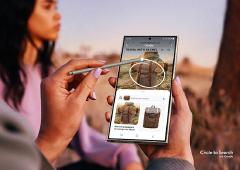Categories
iPhone Xs / Xs Max eSIM and dual-SIM explained
4 minute read
Put down your SIM ejector tools. Starting with the iPhone Xs and Xs Max, you might not ever need to open up your shiny new iPhone, thanks to a new feature called eSIM. This is essentially a digital SIM card that allows you to set your preferred mobile network in the iPhone’s software, rather than needing to insert a physical SIM card into your device. Here’s how it works, and why it unlocks the door to a dual-SIM iPhone for the first time ever.
First up: let’s briefly cover how it works. While eSIMs could conceivably be achieved wholly in software, Apple actually solder on a tiny SIM card inside the iPhone Xs and Xs Max, which can be used to connect to a range of mobile networks; the e in eSIM standards for embedded for this reason. Once you set up your phone, you can visit Settings > Cellular > Add Cellular Plan, then use a QR code or use a mobile network app to get things set up.

Image credit: Hologram.io
We mentioned dual-SIM earlier, and that’s worth mentioning too. The iPhone Xs and Xs Max actually still come with an Nano-SIM tray as well, so if you have an existing Nano-SIM card, you can use this as normal. More excitingly, you can set up an eSIM and insert a Nano-SIM at the same time, allowing you to stay connected to two mobile networks at once - pretty cool, right? That’s handy if you want to have your work and personal lines on the same phone, or if you’re travelling abroad and want to use a cheap local SIM while still keeping in touch on your UK number. The iPhone Xs and Xs Max support Dual SIM Dual Standby, so both of your phone numbers will be able to make and receive calls, but you’ll only be able to use data from one SIM at a time.
Interestingly, the iPhone Xs and Xs Max will have a different dual-SIM option elsewhere in the world. In mainland China plus Hong Kong and Macau, the iPhone Xs Max will come with a double-sided Nano-SIM tray instead, allowing customers to insert two physical SIMs, while the smaller iPhone Xs only has a single Nano-SIM and no eSIM functionality. This is because eSIMs reportedly aren’t allowed in China, although it’s not clear why this is the case.

If you do decide to use the dual-SIM functionality, you’ll see new options throughout iOS 12. For example, you can label each line (e.g. ‘Business’ and ‘Personal’), choose a default line for calls, texts and data and even set certain contacts to always receive calls from one line or another. You’ll also see two signal strength icons at the top of the screen.
While the eSIM hasn’t appeared on an iPhone before, it has made an appearance in other Apple products. In fact, the iPad Pro and the Apple Watch have both included eSIMs in their last few iterations, allowing customers to select from different cell networks when first setting up their device. We’ve also seen eSIMs included in other smartphones; Google’s Pixel 2 phones were the first to launch with an eSIM on Google’s own Project Fi network in the United States. However, it’s still exciting to get this option on the iPhone for the first time, especially as it will likely drive adoption of the standard onto other smartphones in the future.
So one final question - when is eSIM functionality going to be available? Well, that depends on mobile carriers, so this feature will appear sometime after the launch of the iPhone Xs and Xs Max with a software update to iOS 12. This is a super complicated feature, so it makes sense to launch once Apple and mobile carriers across the world support the standard, and not before.
So there you have it - everything you need to know about the eSIM and dual-SIM functionality in the iPhone Xs and Xs Max! If you’re interested in the new iPhones, you can see our iPhone Xs, iPhone Xs Max and iPhone Xr roundup here, or click here to buy.





